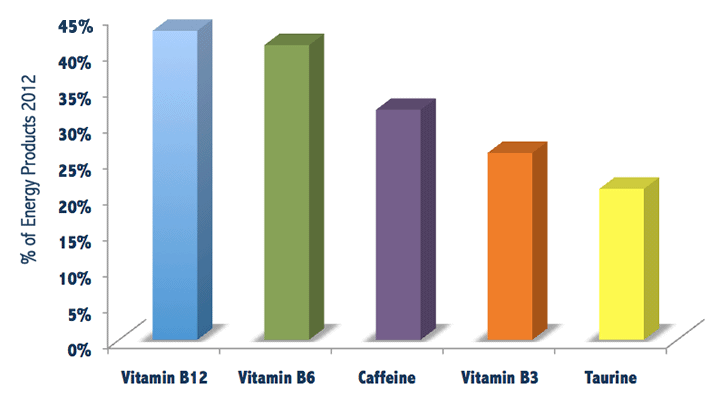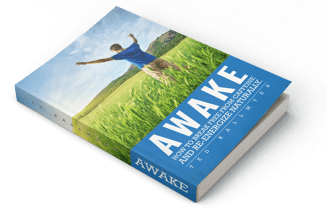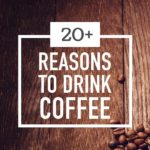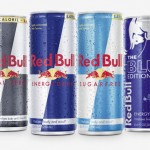Energy Drink Ingredients and What They Do

Energy drink companies are cramming all kinds ingredients into their energy products.
All these strange ingredients and what they supposedly do, can be confusing for consumers.
Here is a list of the most common energy drink ingredients and their reported effects on the human body.
Top 5 Energy Ingredients
According to the Innova Market Insights’ Database these five energy drink ingredients are the most common. The chart below shows the percentage of new energy products in which each ingredient is found.

According to a recent study, caffeine is the only ingredient that actually works. Participants who drank only caffeinated water had the same brain activity and response times as those consuming 5 Hour Energy, which adds also many of the above ingredients.
Caffeine

Caffeine is the most widely used drug on the planet and has been used for centuries for its stimulating effects. This common stimulant is found naturally in coffee and tea, but is also placed in energy drinks and soft drinks by manufacturers.
Most energy drinks contain between 70 and 200mg per can.
- An 8oz cup of drip coffee contains 110-150mg
- 65-125mg/cup of percolated coffee.
- 40-80 mg for instant coffee.
- Dr. Pepper delivers 41mg.
- A can of Coke provides 34mg.
- A full can of RockStar has 160mg.
Caffeine stimulates the central nervous system giving the body a sense of alertness as well as dilates blood vessels. It raises heart rate and blood pressure and dehydrates the body.
People experience side effects above 400mg ( the recommended daily safe dose ), which include sleeplessness, heart palpitations, headaches, nausea, and most commonly the jitters.
A complete list of caffeine side effects is found here .
We also have a huge caffeine content database that reveals the amounts found in most beverages and food items and we teach you how to quit or cut back on caffeine here.
Taurine

Taurine is an amino acid that is naturally produced by the human body. However, the version found in energy drinks is manufactured.
It helps regulate heartbeat, muscle contractions, and energy levels. Usually the body makes enough taurine so there is no need to supplement.
It’s thought, but not proven, that under “stressful conditions” like illness, physical exertion, or injury, the body does not create enough and supplements can help.
Taurine might be a mild inhibitory neurotransmitter. Some studies show it helps during excitable brain states, which could allow people to function better with elevated levels of other stimulants.
Studies have shown that taurine can help lower cholesterol, increase the effectiveness of heart muscle contractions, and improve blood flow and oxygen supply to heart cells.
Taurine, in the past, was banned by some countries from being used as a supplement, but since this ban has been lifted.
A complete list of taurine side effects is found here .
Guarana

Guarana comes from a plant native to South America. Amazonians have used it for a long time to increase alertness and energy.
It’s more dense in caffeine than coffee beans:
Guarana is 3-4% caffeine vs. arabica coffee which is 1-2% caffeine.
Gaurana is different than “caffeine” because it contains a couple of other related molecules: theobromine and theophylline. They’re also found in different concentrations in coffees, teas, and chocolate.
Some people do respond differently to guarana as compared with regular caffeine, which is commonly used in energy drinks. Some report that guarana provides more alertness, while others believe it doesn’t have as good of a stimulating effect.
A complete list of guarana caffeine side effects is found here .
B Vitamins

B vitamins are found naturally in the foods we eat and are the most widely used energy supplement ingredient.
These essentially help the body convert food to energy. The jury’s still out on whether or not they increase energy levels via supplementation and the above study mentioned even proved otherwise.
Most people get adequate levels of B vitamins naturally through the diet except those that are on restrictive diets.
Other names for B vitamins:
- niacin (B3)
- folic acid (B9)
- riboflavin (B2)
- cyanocobalamin (B12)
- pyridoxine hydrochloride (B6)
- pantothenic acid (B5)
Vitamins B6 and B12 don’t absorb well when taken orally, so the small amounts placed in most energy drinks will likely have little chance of producing the desired effect.
A complete list of B vitamin side effects is found here .
Ginseng

Ginseng has been used for centuries as a medicinal herb and is believed to increase energy, have some anti-fatigue properties, relieve stress, and promote memory.
It’s also suspected that ginseng helps stimulate the hypothalamic and pituitary glands, which then secrete something called adrenal corticotropic hormone.
The chemicals in ginseng are nothing that’s naturally created by the human body, so having this in a drink could possibly be risky for some who are sensitive to these chemicals.
200mg/day seems to be the standard dose in a typical ginseng including energy drink, but most people can safely take up to 2700mg through supplementation.
Rare side effects such as diarrhea and headache have been reported.
A complete list of caffeine side effects is found here .
L-Carnitine
L-Carnitine is an amino acid created naturally by the liver and kidneys. This amino acid helps speed up the metabolism and increase energy levels.
It may act as a thermogenic to help increase endurance during exercise. The jury’s still out on whether or not you need to supplement L-Carnitine.
Most people can take 2-6 grams without worry. Make sure the supplement contains L-Carnitine and not D-Carnitine, which is “inactive” and may actually hurt endurance levels.
A complete list of L-Carnitine side effects is found here .
Sugars

Glucose is the body’s preferred fuel. Standard energy drinks contain a lot of sugar. Therefore, energy.
It’s a carbohydrate and a lot of exercise regimen suggest a good dose of carbs for workouts lasting more than an hour.
However, too much sugar intake has been linked to obesity, diabetes, and can spike insulin levels, which can often lead to a “crash” feeling after about an hour or so.
One Rockstar energy drink can have 63 grams of sugar which is the same amount in two regular size Snickers candy bars!
A complete list of sugar side effects is found here .
Antioxidants
Antioxidants are molecules that help the body gracefully recover and prevent the damage from free radicals.
Vitamins C and E, Vitamin A (aka retinol, beta-carotene), and selenium are all antioxidants with Vitamin C probably the most popular in energy drinks.
Antioxidants help fend off illness and prevent cellular damage. A person wouldn’t want to depend on energy drinks for a healthy dose as they usually contain small amounts.
Most are flushed from the body when taken in excess, but Vitamin A can build up in body tissues and cause liver damage when too much is consumed.
Glucuronolactone
Glucuronolactone (DGL) occurs naturally in the human body when glucose is broken down by the liver.
All connective tissue contains this compound. DGL is believed to aid in detoxification, freeing hormones and other chemicals, and the biosynthesis of vitamin C.
It is placed in energy drinks because it is believed to help prevent glycogen depletion by preventing other substances from depleting glycogen supplies in the muscles.
A complete list of Glucuronolactone side effects is found here .
Yerba Mate

Yerba Mate is derived from leaves of a shrub in the Holly family.
It is a natural source of caffeine, but some believe that the form of caffeine in Yerba Mate doesn’t produce the negative side-effects like the caffeine in coffee and guarana.
Yerba Mate is becoming more popular in energy drinks, especially the ones that are marketed as “all natural”.
Yerba mate has the same dangers as caffeine.
Creatine
Creatine is naturally created by the body but can also be obtained by eating meat.
Creatine helps with supplying energy to the muscles and is usually found in energy drinks that are marketed to bodybuilders.
Too much creatine could possibly lead to kidney damage, but the scientific evidence of this is conflicting.
Acai Berry

Acai (pronounced ah-sah-ee) is finding its way into more and more energy drinks.
Acai berry comes from the Acai Palm tree which is found in South America. The berries are rich in antioxidants, but not as much as a concord grape or a wild blueberry.
Most of the acai berry benefits have no scientific basis and are attributed to marketing hype.
The amount of acai in energy drinks is very low and real acai berry juice no doubt tastes nothing like “acai flavored” beverages since usually other fruit juices and flavors are added.
Inositol
Inositol was once considered a B vitamin, but has since been removed from this classification because the human body is able to produce its own supply without the need for supplementation.
It is a type of carbohydrate made from the breaking down of glucose.
Energy Drinks include this ingredient because it aids with the nervous system and serotonin modulation. High doses of inositol have also been given to patients with certain psychiatric conditions because of the positive effect on the nervous system.
Inositol is found in many foods such as fruits, beans, grains, and nuts. There are no known side effects from ingesting too much and Inositol is considered safe.
L-Theanine

L-Theanine is an amino acid that according to recent studies has been shown to calm the brain to enhance concentration.
This amino acid comes from tea leaves and Green tea has the highest concentrations.
Tea has been known for centuries for its ability to relax its drinkers and many tea cultures (not the USA), have a tea before bed every night.
Manufacturers begun putting it into energy drinks to counteract some of the side effects of caffeine. They claim that it works well with caffeine because it eases the jitteriness that caffeine can cause, but with added concentration enhancement.
Some of the drinks that contain this energy drink ingredient are: Sobe Lifewater, Vitamin Water, Vib, Gatorade Tiger Focus, and Reed’s Natural Energy Elixir.
Milk Thistle
Milk Thistle, mainly found in Rockstar and a few other energy drinks, is believed to work as a liver detoxifying agent.
It is placed in energy drinks not really for any energy enhancing properties but as a counter agent to mixing energy drinks with alcohol since milk thistle is supposed to help ease hangovers and help the liver detox from alcohol.
However, studies show that the amount put in energy drinks would be of hardly any benefit to the consumer.
Ginkgo Biloba

This ingredient is named after the rare tree it originates from and only in a few energy drinks.
It is believed to help with memory retention, concentration, circulation, and to act as an antidepressant.
The German government recognizes it as something that helps with memory loss, concentration, and depression.
60mg is a standard supplementation dose, but people can safely take up to 240mg daily.
It is advised, however, that most energy drinks do not contain enough ginkgo to be of any benefit.
A complete list of Ginkgo side effects is found here .
Artificial Sweeteners

Most energy drinks have sugar-free versions that contain artificial sweeteners.
Even energy drinks that contain high amounts of sugar will also include artificial sweeteners to help cover the medicinal taste of the other energy drink ingredients.
The debate rages on concerning the safety of artificial sweeteners and some studies have shown that those that consume sugar-free drinks, on average, have bigger waistlines than those who don’t.
Common sweeteners used are Aspartame, Sucralose, Ace-K, as well as some alcohol sugars. Here are more facts about artificial sweeteners and we have popular sugar free energy drinks listed as well.
There is a lot of anecdotal evidence showing that artificial sweeteners cause a whole range of health problems, including cancer. However, scientific based studies have shown them to be safe in the amounts typically found in beverages.
What isn’t clear is the long-term dangers from artificial sweeteners since most studies only looked at short-term dangers.
Quercetin
Quercetin is found in just a few energy drinks. It is a phytochemical derived from plants and acts as a vasodilator.
This means that it opens blood vessels to allow increased blood flow, which could help with exercise endurance and stamina.
People on primarily plant-based diets get plenty of quercetin, but typical supplement doses are 500-1000mg per day.
Under 3.6 grams per day is considered safe as more than this has been linked to kidney damage.
Energy Drink Preservatives and Artificial Colors
Besides the active ingredients in energy drinks, there are other chemicals placed in energy drinks to give them a longer shelf-life and a more vibrant color.
- Citric acid – preservative and adds sour taste
- Sodium citrate – acidity regulator
- Sodium benzoate – preservative
- Potassium sorbate – preservative
- Caramel color – food coloring
- Benzoic acid – preservative, prevents mold
- Sorbic acid – preservative
- Sodium hexametaphosphate – emulsifier
- Gum arabic – stabilizer
- Calcium disodium EDTA – a preservative and sequestrant
- Potassium benzoate – preservative
- Brominated vegetable oil – emulsifier
- Monopotassium phosphate – buffering and neutralizing agent
- Ester Gum – emulsifier
- Yellow 5 – artificial coloring
- Yellow 6 – artificial coloring
- Red 40 – artificial coloring
- Blue 1 – artificial coloring
In some cases when people have adverse reactions to energy drinks they could be allergic or sensitive to one of the above additives. The artificial colorings are particularly troublesome for some as well as the brominated vegetable oil.
The Final Word
While energy drink ingredients such as caffeine have been widely studied, others haven’t and manufacturers are using mainly anecdotal evidence as justification of their use in their beverages or other products.
Consumers should be aware of the ingredients contained in energy drinks and make educated decisions whether or not these beverages are the best choice for their bodies.
Sources:

Get Help Quitting Caffeine
Reduce your caffeine intake without pain and discomfort.
Download our FREE ebookReferences
- Kavita M. Babu, MD, Richard James Church, MD, William Lewander, MD. "Energy Drinks: The New Eye-Opener For Adolescents". Clinical Pediatric Emergency Medicine. 2008
- Caffiene FAQ a great resource for scientific caffeine information.
- Green Eyed Guide to Energy Drinks.
- How do energy drinks help with exercise?





